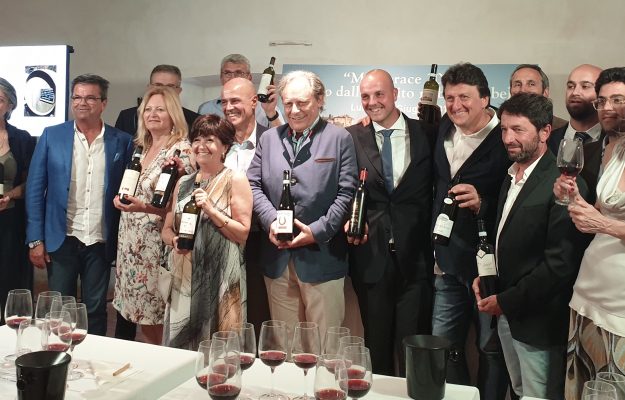For centuries Grignolino was the most beloved and sought after wine of kings and famous people at all of the Italian and European courts. A noble and elegant wine, it was always on the menus at the Savoy, next to Barolo or Champagne. It is a great Piedmont wine for aging. Its history is ancient, but forgotten; however, a group of winemakers between Asti and Alessandria decided to believe in it again. They presented their ambitious project - relaunching Grignolino for aging, which they have called Monferace, at the castle of Ponzano Monferrato.
“We chose the name Monferace because it is the ancient name of Monferrato of the Aleramici, and means “generous hills”, explained Giulio Carlo Alleva, president of the producers association, “it is not just a wine but a project of the territory that ten wine companies developed. Two aspects unite us: patience and reliability. We want to show that Grignolino is a wine that gives great results. One must wait many years before this vine expresses itself to the fullest. We have created a production specification. Whoever wants to produce this Grignolino must follow the established rules”.
A winemaker from Monferrato, Mario Ronco carried out the first experiments in the early 2000s, which today is the leader of Monferace. In 2012, along the same path, and supported by Slow Food, some producers from Casale Monferrato presented the Manifesto del Grignolino Storico and a specification that indicated the most suitable vineyards. Over the years the project has become more defined. Investors have come from outside the territory and the wager has become much more ambitious. And thus, Monferace was created.
“It is produced from 100% Grignolino grapes”, explained Ronco, “and aged for at least 40 months, 24 of which in wooden barrels. The grape has distinct tannins that evolve and become more refined over the years. The first harvest was in 2015. We have set up a vineyard register to identify the crus. They must be located in the hills, planted on calcareous-silt-clayey soils with suitable exposure to ensure optimum grape ripening and no fewer than 4.000 vines per hectare. The maximum yield of grapes must not exceed 70 quintals per hectare. We are also setting up a cru mapping project ”. Today, we are talking about small numbers - around 15.000 bottles, “but we will grow”, promise the producers.
Giusy Mainardi, historian, has traced the history of this vine. The first written document in which Grignolino is cited as Berbexinius, is a lease dated 1249, recorded by the Chapter of Sant’Evasio di Casale Monferrato monks. In 1337, “Grignolerii” wine was mentioned in the Abbey of San Giusto di Susa’s wine inventory. The first mention in a vine identification book dates back to 1798, in Count Nuvolone’s “Instructions”, who called it “Nebieul rosé”. In 1800 Giorgio Gallesio mentions it in the Italian Pomona. Then Mario Soldati and Veronelli renamed it “the crazy head anarchist”. The name comes from its distinct tannins. According to some, the name derives from “grignole”, from Asti (and Fracese) dialect that in ancient times indicated the grape seeds that in this variety are more numerous than other vines and are responsible for its distinct tannins. Others say it is linked to the expression “grigné”, which in Piedmont dialect means smile, as the expression on the face of the one who drinks it resembles a smile, due to the tannins.
The Monferace family has begun to tighten their alliances. YHR multi-starred chef, Enrico Bartolini, who also runs the kitchens of the Relais Sant’Uffizio in Cioccaro di Penago, directed the “premiere” lunch and the Master of Wine Robin Kick led the tasting of the first Monferace 2015 to be placed on the market. The companies that produce it are: Tenuta Santa Caterina, Castello d’Uviglie, Accornero, Tenuta San Sebastiano-Dealessi, Tenuta La Tenaglia, Vicara, Alemat, La Fiammenga, Sulin, Fratelli Natta and Angelini Paolo.
Copyright © 2000/2025
Contatti: info@winenews.it
Seguici anche su Twitter: @WineNewsIt
Seguici anche su Facebook: @winenewsit
Questo articolo è tratto dall'archivio di WineNews - Tutti i diritti riservati - Copyright © 2000/2025








































































































































































































